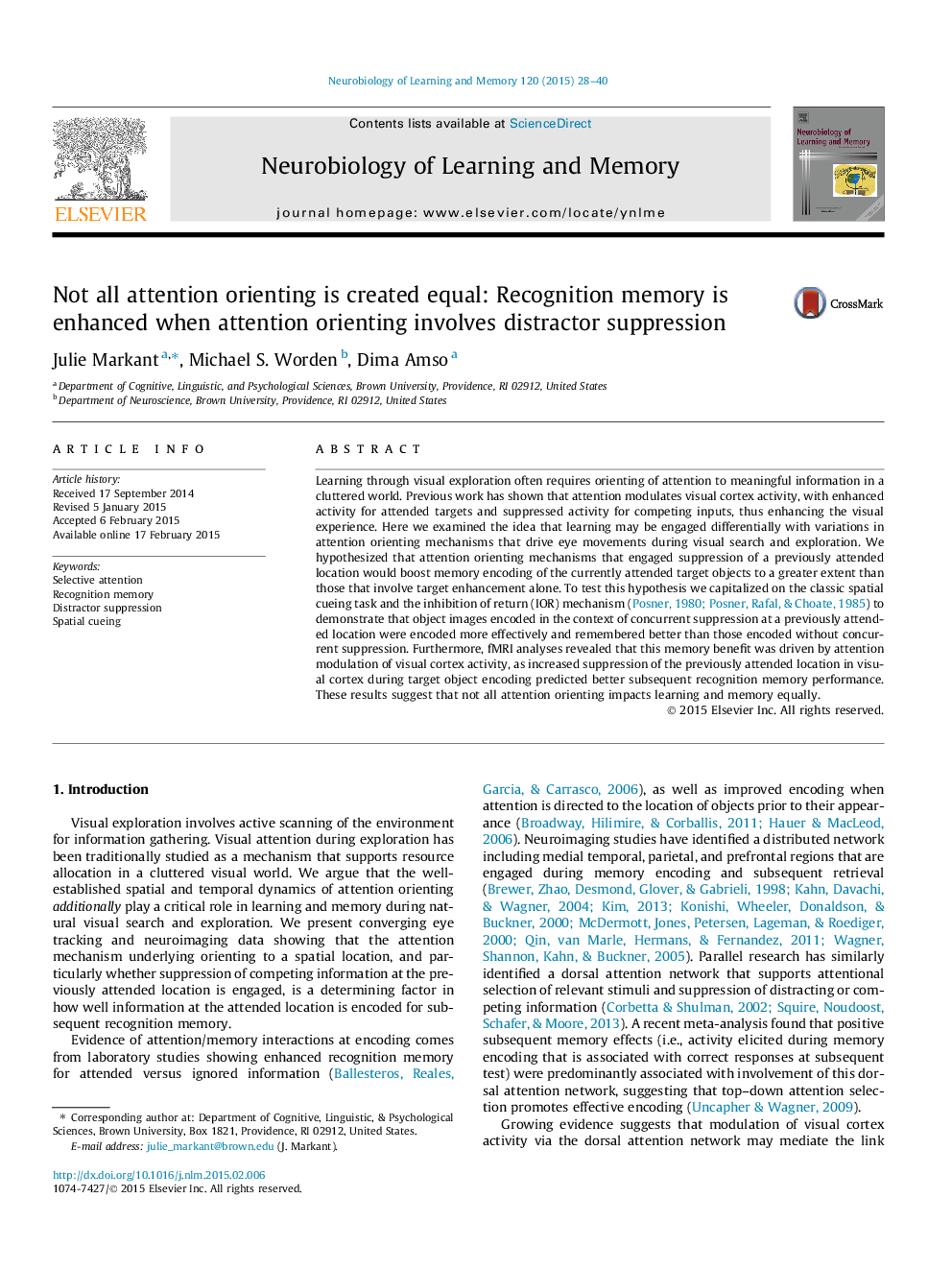| Article ID | Journal | Published Year | Pages | File Type |
|---|---|---|---|---|
| 936526 | Neurobiology of Learning and Memory | 2015 | 13 Pages |
•Suppression at a previously attended location enhanced encoding and recognition memory.•Distractor suppression increased activity in ventral temporal object recognition areas.•Distractor suppression increased coupling of visual & frontal cortex activity.•Extent of distractor suppression in visual cortex predicted memory performance.
Learning through visual exploration often requires orienting of attention to meaningful information in a cluttered world. Previous work has shown that attention modulates visual cortex activity, with enhanced activity for attended targets and suppressed activity for competing inputs, thus enhancing the visual experience. Here we examined the idea that learning may be engaged differentially with variations in attention orienting mechanisms that drive eye movements during visual search and exploration. We hypothesized that attention orienting mechanisms that engaged suppression of a previously attended location would boost memory encoding of the currently attended target objects to a greater extent than those that involve target enhancement alone. To test this hypothesis we capitalized on the classic spatial cueing task and the inhibition of return (IOR) mechanism (Posner, 1980 and Posner et al., 1985) to demonstrate that object images encoded in the context of concurrent suppression at a previously attended location were encoded more effectively and remembered better than those encoded without concurrent suppression. Furthermore, fMRI analyses revealed that this memory benefit was driven by attention modulation of visual cortex activity, as increased suppression of the previously attended location in visual cortex during target object encoding predicted better subsequent recognition memory performance. These results suggest that not all attention orienting impacts learning and memory equally.
